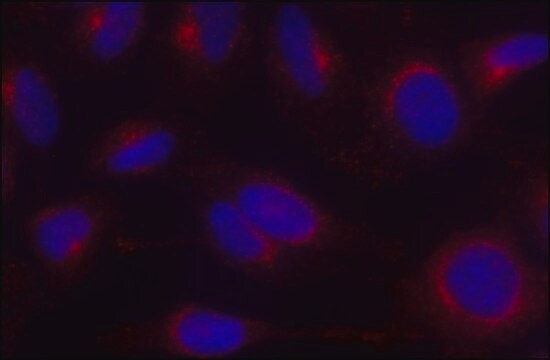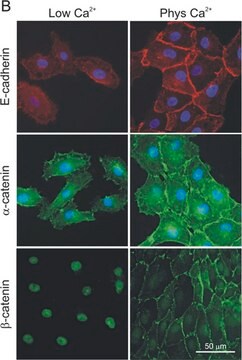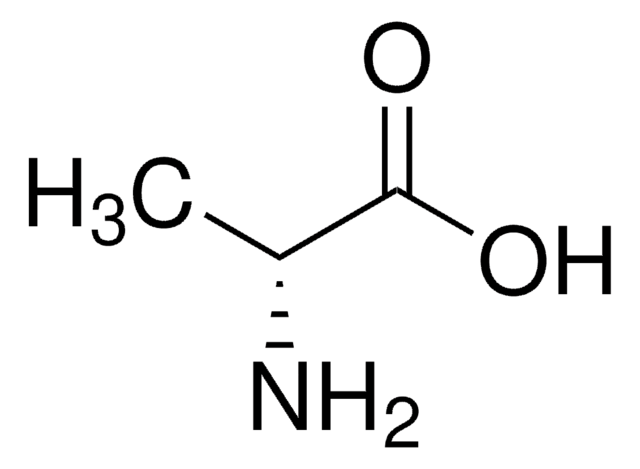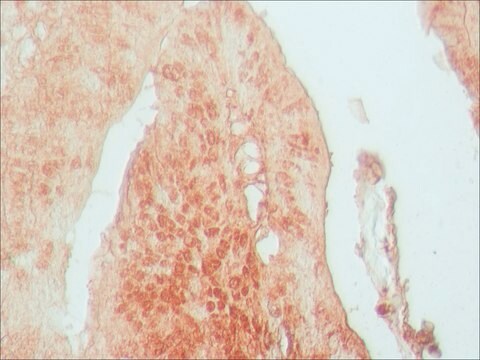Wichtige Dokumente
A4200
Monoclonal Anti-γ-Adaptin antibody produced in mouse
clone 100/3, ascites fluid
Synonym(e):
Anti-AP-1
About This Item
Empfohlene Produkte
Biologische Quelle
mouse
Konjugat
unconjugated
Antikörperform
ascites fluid
Antikörper-Produkttyp
primary antibodies
Klon
100/3, monoclonal
Mol-Gew.
antigen 104 kDa
Enthält
15 mM sodium azide
Speziesreaktivität
bovine, human, monkey
Darf nicht reagieren mit
mouse, rat
Methode(n)
electron microscopy: suitable
immunoprecipitation (IP): suitable
western blot: 1:100 using bovine brain extract
Isotyp
IgG2b
UniProt-Hinterlegungsnummer
Versandbedingung
dry ice
Lagertemp.
−20°C
Posttranslationale Modifikation Target
unmodified
Angaben zum Gen
human ... AP1G1(164)
mouse ... Ap1g1(11765)
rat ... Ap1g1(171494)
Allgemeine Beschreibung
Spezifität
Immunogen
Anwendung
Immuno-electron microscopy (1 paper)
Immunofluorescence (1 paper)
Physikalische Form
Haftungsausschluss
Sie haben nicht das passende Produkt gefunden?
Probieren Sie unser Produkt-Auswahlhilfe. aus.
Lagerklassenschlüssel
13 - Non Combustible Solids
WGK
WGK 1
Flammpunkt (°F)
Not applicable
Flammpunkt (°C)
Not applicable
Hier finden Sie alle aktuellen Versionen:
Besitzen Sie dieses Produkt bereits?
In der Dokumentenbibliothek finden Sie die Dokumentation zu den Produkten, die Sie kürzlich erworben haben.
Unser Team von Wissenschaftlern verfügt über Erfahrung in allen Forschungsbereichen einschließlich Life Science, Materialwissenschaften, chemischer Synthese, Chromatographie, Analytik und vielen mehr..
Setzen Sie sich mit dem technischen Dienst in Verbindung.








